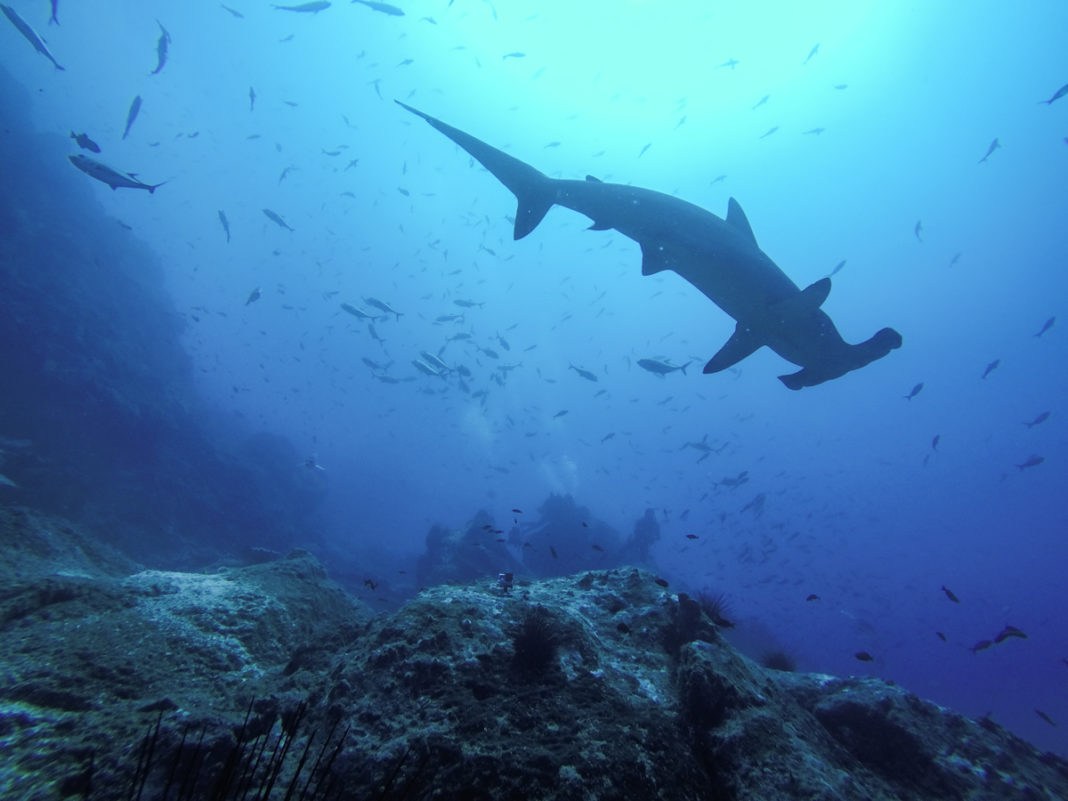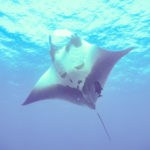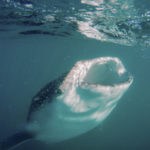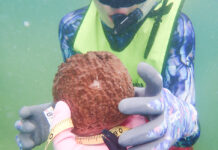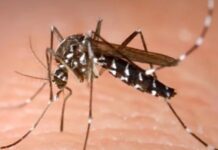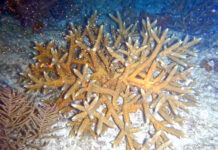Over the last few months, some really cool critters have been spotted in our waters to the delight of divers and boaters.
In January, Tony Young, owner of Forever Young Charter Company, was spearfishing on the Duane when he noticed a familiar shape in clear water 100 feet below him.
“I knew it was a hammerhead because they are very easy to recognize from other sharks,” Young said.
Since then, Young has seen “a number of them” in addition to large eagle rays last week.
Andy Bruckner, research coordinator with the Florida Keys National Marine Sanctuary, said, “Hammerheads are seen on occasion. There is usually a seasonal increase near the bridge at Bahia Honda when the tarpon are running.”
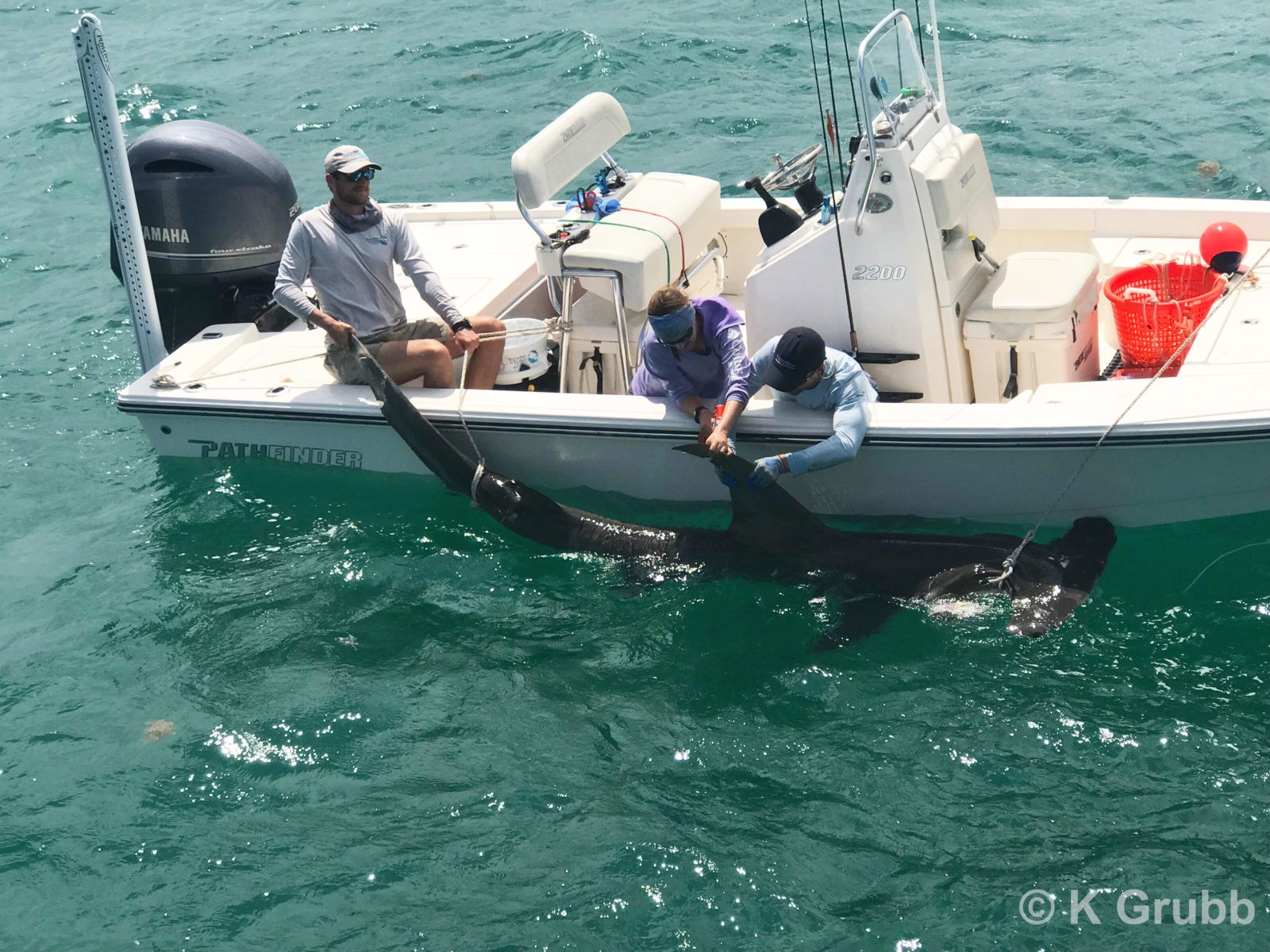
Grace Casselberry, a doctoral candidate at the University of Massachusetts Amherst, has been working with sharks in the Florida Keys National Marine Sanctuary since 2014 and studies the predator-prey interactions between great hammerhead sharks and Atlantic tarpon. Using electronic tags, she follows the movement patterns of both migratory species.
While some great hammerheads that she’s tagged stay in the Keys year-round, others travel north along the Gulf and Atlantic coasts in the summer, Casselberry said.
“Part of my work is to better understand what drives these migrations, but it is likely a combination of following migratory food sources, like tarpon that aggregate in the Tampa Bay area and the blacktip shark aggregation along the Atlantic Coast, and individual temperature preference,” Casselberry said.

On March 26, a mother and calf right whale were spotted in the Gulf of Mexico north of Marathon trying to navigate around the Keys and up the East Coast.
At the end of June, Islamorada Dive Center posted a popular Facebook video titled “Manta time!, in which dive instructor Kelsey can be heard screaming as the video rolls on a graceful reef manta gliding by. The same manta ray was spotted further south a few days later.
Most recently, Big Pine Key’s Brittany Burtner and her partner Dave had an hours-long encounter with four whale sharks in Looe Key. The animals ranged in size from 22 feet to almost 40 feet and were just “cruising around this quarter-mile area feeding on plankton.”
“I can’t truly find the words to describe an experience that I’ve dreamed about and actively tried to make happen since I was a teenager — let alone the fact that it happened practically in my backyard!,” Burtner said.
Casselberry suspected increased sightings of megafauna could be linked to the pandemic, as more people went outside on boats, fishing or otherwise, because it’s “a great way to keep social distancing while getting out of the house,” and saw more things in the water.
Fishing guides and others out on the water daily will see great hammerheads and other sharks “fairly often,” she noted, even if the sightings seem rarer to the average diver or boater.
There are shark and ray species in the Keys year-round, the elasmobranch expert said. Great hammerheads return to the Keys in early spring and leave during the hottest months of summer. Whale sharks and manta rays are less commonly seen, but when they are, it’s in the summer.
Bruckner noted that bull sharks, tiger sharks, pilot whales, dolphins and manatees are “routinely” observed as well.
All these species are “highly mobile” and move in response to environmental conditions like water temperature, time of day, and food abundance, Casselberry said.














